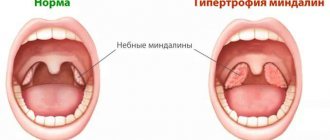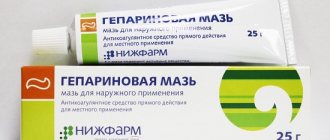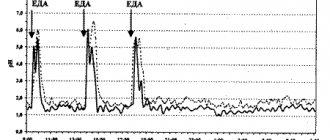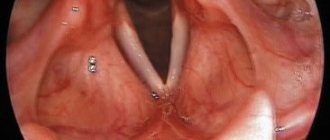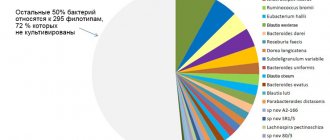General rules
Enteritis is an inflammation of the small intestine with disruption of its function. The causes of this disease are numerous and have different etiologies. Acute enteritis is caused by bacteria, viruses, fungi, food allergens, medications, drugs (primarily NSAIDs and antibiotics ), radiation, or toxins .
A chronic disease is considered to be any long-term enteritis (infectious or immuno-allergic), which leads to a chronic inflammatory process in the intestines. Chronic inflammation of the small intestine occurs against the background of abnormalities in its development, errors in diet (rich, fatty, spicy, rough foods), bad habits, diseases of the blood, liver, kidneys, immune and endocrine systems, parasites, intestinal surgeries and abdominal injuries.
The clinical picture of enteritis is characterized by diarrhea and symptoms of malabsorption (disorder of digestion and absorption) in the chronic course of the disease. Acute enteritis occurs rapidly and is manifested by nausea, vomiting, severe abdominal pain, bloating and rumbling, and loose stools.
The severity of the disease is determined by the severity of the inflammatory process and endotoxicosis by bacterial toxins. Chronic enteritis is less acute and only during exacerbation does frequent watery stool appear after eating, bloating , and unexpressed pain in the umbilical region.
A correctly identified cause allows you to effectively treat the disease, restore the structure of the mucous membrane and achieve long-term remission in the chronic course of the disease. The patient's nutrition is of great importance in this regard.
The diet for enteritis accompanied by diarrhea should inhibit peristalsis. In this connection, products that enhance the secretory and motor functions of the intestines, promote fermentation and contain coarse fiber are excluded. These restrictions are prescribed until stool normalization. Subsequently, the range of products is gradually expanded. It is also recommended to use products rich in tannin (tea, decoctions and jelly from blueberries, quince, dogwood).
Products in composition and quantity must correspond to the ability to digest food. At any stage of the process, the principle of mechanical and chemical sparing is observed. In the acute period, hunger is prescribed. The patient should drink 1.5-2 liters of liquid (strong tea with lemon, decoction of rose hips and herbs). Then a food fasting is recommended, in which the daily volume of food is reduced by 15-50% of the requirement, depending on the severity of the process.
All these requirements are met by Treatment Table No. 4 , which is recommended for acute and chronic diseases during periods of severe diarrhea . Since its composition is not complete, therapeutic nutrition is prescribed for a short period of 3-4 days.
The main nutritional points are:
- Fractional diet with reduced portions.
- Cooking steamed and mashed dishes. All dishes should have a viscous consistency - slimy soups, jelly, well-cooked and pureed porridge.
- Exclusion of foods that enhance motility - bran bread, black bread, dried fruits, coarse fiber from vegetables and fruits, stringy meat, legumes, canned food, smoked foods, oatmeal, buckwheat and barley, which increase intestinal activity more than semolina and rice, beer, kvass, pickles, carbonated drinks, sweet dishes, fatty dishes, kumiss.
- Vegetables are completely excluded during this period (you can add their decoctions to soups).
Meals during the period of diarrhea include white bread croutons (no more than 200 g per day), soups in weak meat broth, to which mucous decoctions of cereals and pureed lean meat are added. Meat, fish and poultry are prepared in the form of souffles, cutlets and quenelles.
Allowed: semi-liquid rice and semolina porridge, steam omelette and all kinds of jelly (blueberry, quince, pear, blackcurrant and bird cherry). If well tolerated, pureed raw apples can be administered, taking into account the fact that they contain pectins .
As diarrhea decreases, a full-fledged Table No. 4B (mashed) is recommended, which can be performed for a long time until the stool is completely normalized. For chronic enteritis in the recovery stage and during the period of remission, Diet No. 4B , which differs from the previous one in that the dishes in it are not pureed. It is balanced (proteins up to 110 g, fats 90 g), less gentle and much more varied in composition.
Food is steamed or baked, it is not crushed, and porridges are prepared in crumbly form. The range of permitted vegetables has been significantly expanded: green peas, white cabbage (limited in boiled or stewed form), beets, green beans. You can eat fresh cucumbers, salads and fresh tomatoes. If the patient tolerates whole milk well, it is also included in the diet.
With all expansions in nutrition, the following is maintained:
- Five to six meals a day.
- Prohibition on the use of foods that enhance fermentation. These include legumes, kvass, black bread, bananas, grapes, and carbonated drinks. White cabbage can be consumed in limited quantities and with normal tolerance.
- Coarse vegetables and strong irritants to the mucous membrane (sorrel, radish mushrooms, radishes, celery, turnips) are not allowed.
With long-term chronic enteritis, the absorption processes of iron, Vitamin B12 , potassium, calcium, magnesium, protein, and folic acid . Patients develop B12-deficiency anemia , osteoporosis , weight loss, and hypovitaminosis .
Therefore, the patient’s nutrition must compensate for these disorders. In addition to the fact that nutrition should be complete and contain easily digestible proteins and fat-soluble vitamins A , D , K and E, Mezim Forte , Creon , Pancreatin is recommended to correct digestive and absorption functions . If there is a marked decrease in protein in the blood, the administration of amino acid . Enteral nutrition has a good effect ( Nutridrink , Nutren ).
In the presence of unstable stool, taking probiotics ( Enterol , Probifor , Bifistim , Polybacterin ) and food products enriched with lacto- and bifidobacteria .
If milk is poorly tolerated and to reduce flatulence a low-lactose diet is recommended. The degree of restriction of milk and dairy products varies from person to person. Some patients cannot tolerate milk, but can consume fermented milk products. Patients with mild hypolactasia (decreased amount of enzyme for digesting lactose ) can consume small amounts (100-150 ml per day) of whole milk. Restrictions are lifted when tolerance to dairy products improves.
Treatment of acute enteritis
Treatment of acute enteritis in children and adults is carried out in a hospital. The acute toxic form of the disease is treated in the gastroenterology department, infectious enteritis - in the infectious disease ward. Treatment of viral, coronavirus enteritis and other forms of the disease is carried out based on test results and individual characteristics of the body. Patients are prescribed a diet with a limited content of fats and carbohydrates, drinking plenty of fluids, taking hydration therapy measures if necessary, bed rest, restorative and symptomatic treatment. With the development of a severe form of dysbiosis, drug correction of the intestinal flora is carried out, and diarrhea is treated with astringents. In case of protein metabolism disorders, polypeptide solutions are administered.
Acute enteritis is usually treated for about a week; after the acute symptoms of the disease have subsided, the patient is discharged from the hospital.
Treatment of chronic enteritis
In case of exacerbations of chronic enteritis, treatment is carried out in a hospital setting. Absorption is stimulated by long-acting nitrate-containing drugs - nitrong, sustak, etc. The functionality of cell membranes in the intestinal epithelium is restored by protective agents - essentiale, karsil, etc.
Imodium is prescribed to suppress excess intestinal motility. If severe diarrhea occurs, antiseptics, astringents, adsorbents and enveloping drugs are prescribed. For these purposes, decoctions of chamomile, St. John's wort, sage, blueberries, bird cherry and alder cones can be used. Dysbacteriosis is corrected with the help of eubiotics and probiotics. Severe absorption disorders, accompanied by severe protein deficiency, are treated with intravenous infusion of amino acid solutions. When signs of enteritis appear against the background of various neoplasms of the small intestine (diverticula, polyps, etc.), they are surgically removed.
Authorized Products
The diet for inflammation of the small intestine during the recovery period includes:
- Soups with weak broth. The cereals in them (exclude millet, barley, pearl barley, corn, as they are difficult to digest) are well boiled, kneaded, and the permitted vegetables are finely chopped.
- It is allowed to eat soups with potatoes, carrots, cauliflower or zucchini. During the period of stable remission, white cabbage, young peas, green beans and even beets are gradually introduced. Soups are prepared with the addition of meatballs or boiled minced meat.
- Porridge: buckwheat, rice, oatmeal. Prepared in water; broth can be used if desired. It is possible to prepare porridges with the addition of milk. In addition to porridge, vermicelli, thin noodles and medium-sized pasta can serve as side dishes. Puddings or casseroles are also prepared from permitted cereals.
- Low-fat varieties of meat, poultry, and fish, which are served in the form of cutlets and quenelles, and the patient can eat tender types of poultry and fish in pieces.
- Vegetables (potatoes, carrots, cauliflower and Brussels sprouts, zucchini) are used to prepare stewed and boiled side dishes, cutlets and stews. In fresh form, the patient can eat ripe tomatoes and cucumbers without skin, leaf salads, fresh parsley as part of salads and first courses.
- Dried wheat bread, dry biscuits, crackers, vanilla crackers or low-fat sponge cake are allowed.
- Among dairy products, the main place is occupied by fermented milk products and freshly prepared cottage cheese, from which casseroles, puddings and other dishes are also prepared.
- You can introduce mild cheese into your diet, add milk and cream to various dishes and drink whole milk if this does not cause loose stools. Butter is served with bread and as part of dishes.
- Vegetable oils are temporarily excluded due to the possibility of diarrhea.
- Eggs you can eat 2 pcs. daily prepared in the form of omelettes.
- Appetizers that are well tolerated include sturgeon caviar, jellied fish, soaked herring, and boiled tongue.
- Ripe fruits (apples, pears), which should be eaten without peeling. Strawberries and raspberries are allowed in their raw form, but melon, watermelon, peaches, apricots, cherry plums, and plums are not allowed. Jelly, compotes, decoctions, jellies are prepared from fruits; apples and pears can be baked. The use of natural marshmallows, jam and jam is allowed.
- Drinks include tea, weak coffee, cocoa prepared with water, rosehip decoction and various juices - you can drink any (excluding grape, plum, apricot and cabbage) in a diluted form.
Table of permitted products
| Proteins, g | Fats, g | Carbohydrates, g | Calories, kcal | |
Vegetables and greens | ||||
| zucchini | 0,6 | 0,3 | 4,6 | 24 |
| cauliflower | 2,5 | 0,3 | 5,4 | 30 |
| potato | 2,0 | 0,4 | 18,1 | 80 |
| carrot | 1,3 | 0,1 | 6,9 | 32 |
Fruits | ||||
| quince | 0,6 | 0,5 | 9,8 | 40 |
| pomegranate | 0,9 | 0,0 | 13,9 | 52 |
| pears | 0,4 | 0,3 | 10,9 | 42 |
| dogwood | 1,0 | 0,0 | 10,5 | 44 |
| apples | 0,4 | 0,4 | 9,8 | 47 |
Berries | ||||
| blueberry | 1,1 | 0,4 | 7,6 | 44 |
Nuts and dried fruits | ||||
| dried pears | 2,3 | 0,6 | 62,6 | 249 |
Cereals and porridges | ||||
| buckwheat (kernel) | 12,6 | 3,3 | 62,1 | 313 |
| semolina | 10,3 | 1,0 | 73,3 | 328 |
| oat groats | 12,3 | 6,1 | 59,5 | 342 |
| cereals | 11,9 | 7,2 | 69,3 | 366 |
| white rice | 6,7 | 0,7 | 78,9 | 344 |
Bakery products | ||||
| white bread crackers | 11,2 | 1,4 | 72,2 | 331 |
Confectionery | ||||
| jam | 0,3 | 0,2 | 63,0 | 263 |
| jam | 0,3 | 0,1 | 56,0 | 238 |
| marshmallows | 0,8 | 0,0 | 78,5 | 304 |
| fruit and berry marmalade | 0,4 | 0,0 | 76,6 | 293 |
| meringues | 2,6 | 20,8 | 60,5 | 440 |
| paste | 0,5 | 0,0 | 80,8 | 310 |
| Maria cookies | 8,7 | 8,8 | 70,9 | 400 |
Raw materials and seasonings | ||||
| dried bird cherry | 8,4 | 0,0 | 16,8 | 101 |
Dairy | ||||
| skim milk | 2,0 | 0,1 | 4,8 | 31 |
| sour cream | 2,8 | 20,0 | 3,2 | 206 |
| acidophilus | 2,8 | 3,2 | 3,8 | 57 |
Cheeses and cottage cheese | ||||
| cheese | 24,1 | 29,5 | 0,3 | 363 |
| cottage cheese 0.6% (low fat) | 18,0 | 0,6 | 1,8 | 88 |
Meat products | ||||
| boiled beef | 25,8 | 16,8 | 0,0 | 254 |
| boiled veal | 30,7 | 0,9 | 0,0 | 131 |
| rabbit | 21,0 | 8,0 | 0,0 | 156 |
Bird | ||||
| boiled chicken | 25,2 | 7,4 | 0,0 | 170 |
| turkey | 19,2 | 0,7 | 0,0 | 84 |
Fish and seafood | ||||
| Red caviar | 32,0 | 15,0 | 0,0 | 263 |
| black caviar | 28,0 | 9,7 | 0,0 | 203 |
Oils and fats | ||||
| butter | 0,5 | 82,5 | 0,8 | 748 |
Non-alcoholic drinks | ||||
| mineral water | 0,0 | 0,0 | 0,0 | — |
| green tea | 0,0 | 0,0 | 0,0 | — |
| black tea | 20,0 | 5,1 | 6,9 | 152 |
Juices and compotes | ||||
| Orange juice | 0,9 | 0,2 | 8,1 | 36 |
| Cherry juice | 0,7 | 0,0 | 10,2 | 47 |
| Strawberry juice | 0,6 | 0,4 | 7,0 | 31 |
| tangerine juice | 0,8 | 0,3 | 8,1 | 36 |
| Apple juice | 0,4 | 0,4 | 9,8 | 42 |
| * data is per 100 g of product | ||||
Enteritis in children. Symptoms
Children often have acute enteritis - a consequence of poisoning, infections, helminthiases, and food allergies. First of all, it is characterized by the intestinal manifestations described above. General symptoms (not strictly specific to inflammation of the small intestine) appear as a result of long-term ill health in the body (damages to other parts of the gastrointestinal tract, severe chronic diseases of other organs and systems, congenital structural and functional abnormalities, for example, enzymatic deficiency, etc.). They are also similar to the systemic signs of “adult” enteritis.
Fully or partially limited products
- Strong and fatty broths, fatty meats, canned food, fatty sauces, and smoked foods are excluded.
- Products that irritate the gastrointestinal mucosa - garlic, celery, green onions, garlic, onions without heat treatment, radishes, radishes, turnips and enhance fermentation - legumes, beer, rye bread, fresh baked goods, kvass.
- You should not eat legume soups, cold first courses (okroshka, kholodnik) and limit the consumption of borscht and rassolnik.
- Do not use cooking oil, animal fats, vegetable oil, corn, millet, pearl barley and barley.
- Avoid spicy foods, large quantities of spices, mustard, horseradish, chili pepper.
- It is not allowed to consume chocolate, ice cream, pastries, cakes, carbonated drinks, kvass, and sour fruit drinks.
Table of prohibited products
| Proteins, g | Fats, g | Carbohydrates, g | Calories, kcal | |
Vegetables and greens | ||||
| vegetables legumes | 9,1 | 1,6 | 27,0 | 168 |
| swede | 1,2 | 0,1 | 7,7 | 37 |
| cabbage | 1,8 | 0,1 | 4,7 | 27 |
| cucumbers | 0,8 | 0,1 | 2,8 | 15 |
| parsnip | 1,4 | 0,5 | 9,2 | 47 |
| parsley (root) | 1,5 | 0,6 | 10,1 | 49 |
| radish | 1,2 | 0,1 | 3,4 | 19 |
| white radish | 1,4 | 0,0 | 4,1 | 21 |
| turnip | 1,5 | 0,1 | 6,2 | 30 |
| beet | 1,5 | 0,1 | 8,8 | 40 |
| celery | 0,9 | 0,1 | 2,1 | 12 |
| horseradish | 3,2 | 0,4 | 10,5 | 56 |
| garlic | 6,5 | 0,5 | 29,9 | 143 |
| spinach | 2,9 | 0,3 | 2,0 | 22 |
| sorrel | 1,5 | 0,3 | 2,9 | 19 |
Fruits | ||||
| bananas | 1,5 | 0,2 | 21,8 | 95 |
| melon | 0,6 | 0,3 | 7,4 | 33 |
Berries | ||||
| grape | 0,6 | 0,2 | 16,8 | 65 |
Mushrooms | ||||
| mushrooms | 3,5 | 2,0 | 2,5 | 30 |
Nuts and dried fruits | ||||
| dried fruits | 2,3 | 0,6 | 68,2 | 286 |
Cereals and porridges | ||||
| pearl barley | 9,3 | 1,1 | 73,7 | 320 |
| Wheat groats | 11,5 | 1,3 | 62,0 | 316 |
| millet cereal | 11,5 | 3,3 | 69,3 | 348 |
| barley grits | 10,4 | 1,3 | 66,3 | 324 |
Flour and pasta | ||||
| pasta | 10,4 | 1,1 | 69,7 | 337 |
Bakery products | ||||
| vysivkovy bread | 9,0 | 2,2 | 36,0 | 217 |
| Old Russian grain bread | 9,6 | 2,7 | 47,1 | 252 |
| Rye bread | 6,6 | 1,2 | 34,2 | 165 |
Confectionery | ||||
| candies | 4,3 | 19,8 | 67,5 | 453 |
| cookie | 7,5 | 11,8 | 74,9 | 417 |
| Kurabye cookies | 6,7 | 25,8 | 64,6 | 516 |
| butter cookies | 10,4 | 5,2 | 76,8 | 458 |
Ice cream | ||||
| ice cream | 3,7 | 6,9 | 22,1 | 189 |
Cakes | ||||
| cake | 4,4 | 23,4 | 45,2 | 407 |
Raw materials and seasonings | ||||
| seasonings | 7,0 | 1,9 | 26,0 | 149 |
| mustard | 5,7 | 6,4 | 22,0 | 162 |
Meat products | ||||
| pork | 16,0 | 21,6 | 0,0 | 259 |
Sausages | ||||
| dry-cured sausage | 24,1 | 38,3 | 1,0 | 455 |
Bird | ||||
| duck | 16,5 | 61,2 | 0,0 | 346 |
| goose | 16,1 | 33,3 | 0,0 | 364 |
Fish and seafood | ||||
| dried fish | 17,5 | 4,6 | 0,0 | 139 |
| smoked fish | 26,8 | 9,9 | 0,0 | 196 |
| canned fish | 17,5 | 2,0 | 0,0 | 88 |
Oils and fats | ||||
| vegetable oil | 0,0 | 99,0 | 0,0 | 899 |
| animal fat | 0,0 | 99,7 | 0,0 | 897 |
| cooking fat | 0,0 | 99,7 | 0,0 | 897 |
Non-alcoholic drinks | ||||
| bread kvass | 0,2 | 0,0 | 5,2 | 27 |
Juices and compotes | ||||
| apricot juice | 0,9 | 0,1 | 9,0 | 38 |
| grape juice | 0,3 | 0,0 | 14,0 | 54 |
| plum juice | 0,8 | 0,0 | 9,6 | 39 |
| * data is per 100 g of product | ||||
Symptoms of the disease
Manifestations of enteritis depend on the form of the disease and the cause that caused it. Doctors divide clinical manifestations into intestinal and extraintestinal. The latter include general weakness, loss of appetite, weight loss, dry skin, brittle hair, grayish color of the skin, thinning nails.
Intestinal symptoms:
- increased gas formation;
- rumbling in the stomach;
- diarrhea followed by constipation;
- aching pain in the right iliac region;
- unpleasant taste in the mouth.
Menu (Power Mode)
The patient’s diet is quite varied, and since the composition is balanced, it can be followed for a long time. The list of protein dishes from beef, chicken, turkey, fish, cottage cheese is varied and they provide a long-lasting feeling of fullness. If patients tolerate milk, then breakfast can consist of a variety of milk porridges and egg dishes.
Cottage cheese diversifies the menu and gives a feeling of fullness
The therapeutic nutrition of this table is balanced and varied. These points allow patients with chronic intestinal diseases to constantly adhere to it. For many, this is a necessity, since dietary nutrition has a positive effect on the condition of the gastrointestinal tract. Minor deviations from it cause deterioration in health.
| Breakfast |
|
| Lunch |
|
| Dinner |
|
| Afternoon snack |
|
| Dinner |
|
| For the night |
|
| Breakfast |
|
| Lunch |
|
| Dinner |
|
| Afternoon snack |
|
| Dinner |
|
| For the night |
|
| Breakfast |
|
| Lunch |
|
| Dinner |
|
| Afternoon snack |
|
| Dinner |
|
| For the night |
|
Diagnosis and treatment
For diagnosis, you need to collect anamnesis, clarify the symptoms and nature of the pain. But one survey is not enough, so diagnostic manipulations include several steps:
- Tapping the abdominal wall.
- General blood analysis.
- Coprogram.
- Bacteriological examination of stool.
- Ultrasound of the gastrointestinal tract.
Other diagnostic methods may be added to the listed studies.
Treatment of the disease takes place in two directions: elimination of primary symptoms and treatment of the causes that caused the disorder. The acute form of enteritis requires hospitalization and observation of the patient. If the form of the disease is viral, the patient is quarantined until complete recovery. In severe cases and the appearance of necrosis of internal organs, surgical intervention will be required.
As first aid for the treatment of enteritis, adsorbents are used: activated carbon, smecta, polysorb. Other treatment methods include taking enzyme preparations, antibiotics, probiotics, antihistamines, vitamin complexes and other medications appropriate to the type and form of the disease. The treatment regimen often includes taking antidiarrheals, antispasmodics, sedatives and antipyretics.
Folk remedies have also proven themselves to be effective in the treatment of enteritis. For example, rice water, dill seeds, chamomile, sage or St. John's wort infusions. However, they must be taken as prescribed by a doctor, as an auxiliary herbal medicine, and not as the main treatment.
Reviews and results
The therapeutic nutrition of this table is balanced and varied. These points allow patients with chronic intestinal diseases to constantly adhere to it. For many, this is a necessity, since dietary nutrition has a positive effect on the condition of the gastrointestinal tract. Minor deviations from it cause deterioration in health.
- “... I have chronic enteritis after suffering an enterovirus infection. It proceeds relatively easily. Exacerbations occur after salads with mayonnaise and a large amount of vegetables. This forces me to switch to a healthy diet, which I can follow for about a month. My diet consists of steamed meat dishes, cereals, low-fat soups and cottage cheese. During this period, I practically give up vegetables (except for boiled potatoes). I also take herbal infusions and enzymes. Within a month I bring my intestinal condition back to normal. Since there are no other gastrointestinal diseases, I expand my diet and quickly switch to normal. I try not to disturb it too much, but it doesn’t work during the holidays”;
- “...Crohn's disease requires constant proper nutrition. When I was discharged from the department, I was given a nutrition reminder. Borscht, cabbage in any form and other coarse vegetables, mushrooms, okroshka, duck, goose, pickles, any sausages, pickled vegetables, hot seasonings and even citrus fruits, strawberries, chocolate, coffee, red apples are excluded. Having a mild course, I very rarely allow myself some things from this list, but in small quantities. I monitor the condition, and if there is no diarrhea, bloating or pain, I can try this product again after a while. For the most part, I prepare my own dietary meals from approved foods. A slow cooker helps in this regard.”
Causes
Enteritis is a group of diseases that are not age-related, so both children and the older generation are at risk.
The causes of the disease are classified according to form. The causative agents of the acute form are bacteria or viruses, excessive consumption of spicy and fatty foods, poisoning with toxic substances and alcohol, allergies to medications or certain types of products. The manifestation of enteritis in acute form can be caused by medical operations on the gastrointestinal tract and uncontrolled use of medications without a doctor’s prescription. The following factors contribute to the development of chronic enteritis:
- helminths;
- constant overeating;
- hereditary pathologies;
- congenital developmental anomalies;
- autoimmune diseases;
- lack of enzymes for digestion;
- untreated acute enteritis;
- abuse of heavy and rough foods;
- diseases of internal organs;
- injuries in the abdominal area.
Abuse of fast food, poor chewing of food, sedentary lifestyle and bad habits also provoke the development of the inflammatory process.
Diagnosis of enteritis disease
Diagnosis begins with examining the patient and collecting anamnesis. As an additional examination, the doctor will prescribe a general blood test, biochemistry, coprogram, stool for virological testing, x-rays using a contrast agent, ultrasound examination of the liver and pancreas, and endoscopy. Diagnosis of enteritis disease should be comprehensive. It is extremely important to differentiate the pathology from thyrotoxicosis, ulcerative colitis and irritable bowel syndrome.
